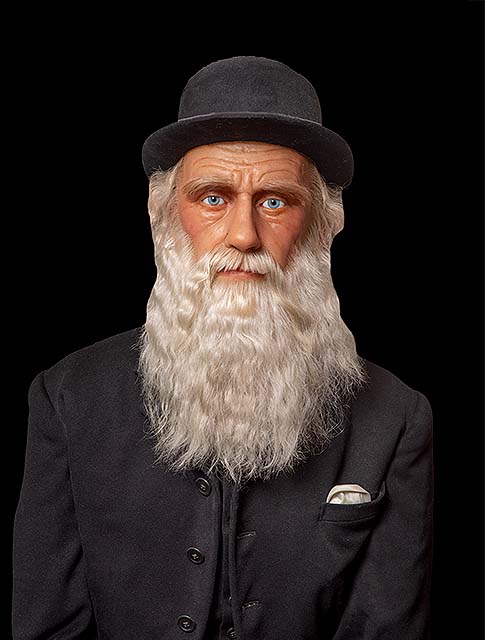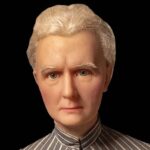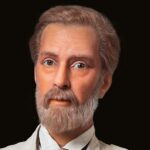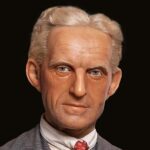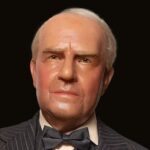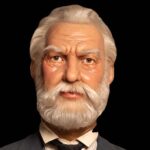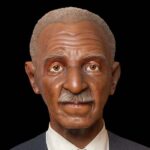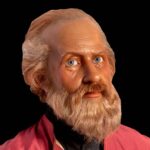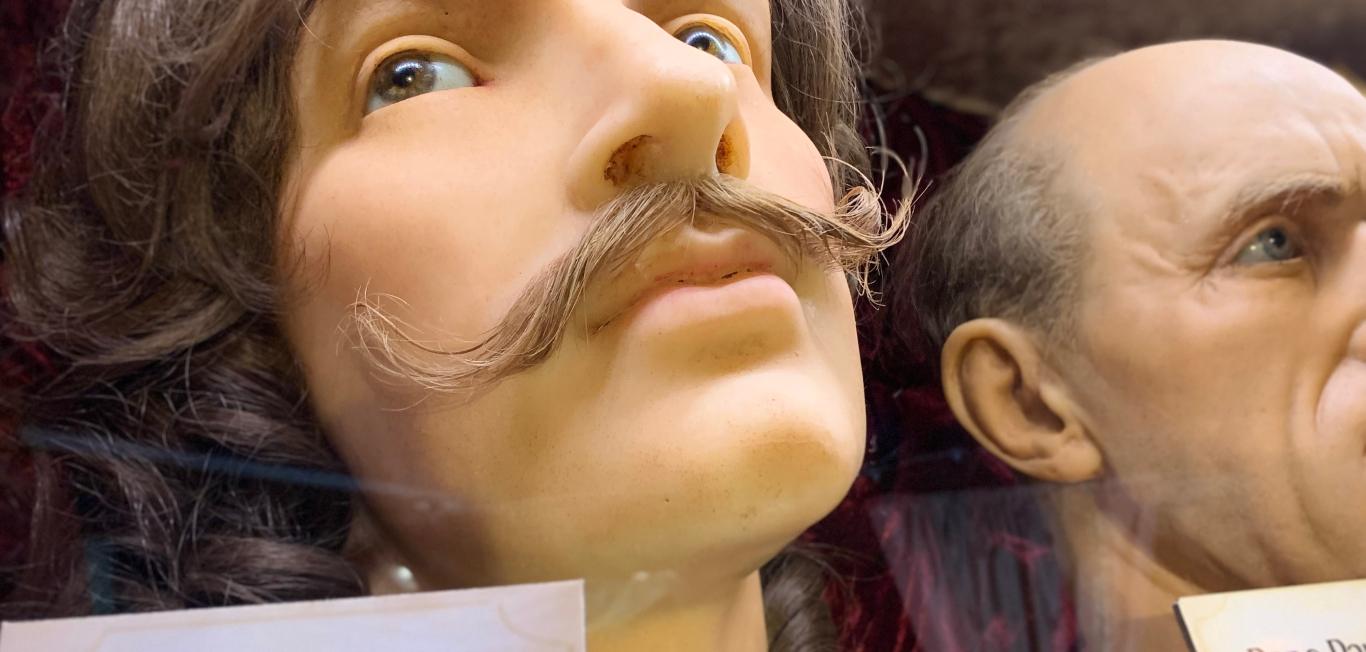Complete History of Charles Darwin
Charles Darwin was born on February 12, 1809, in Shrewsbury, England. He is widely known for his groundbreaking theory of evolution, which revolutionized the field of biology and our understanding of the natural world. To this day, Charles Darwin is recognized as one of the most influential scientists in history.
Charles Darwin was born into an affluent, religious Victorian family. From the beginning, he proved to have a different nonreligious ideology of the world. As a child, Darwin was not as interested in traditional academics as he was in nature. At this time, science was not an acceptable subject; therefore, Darwin’s interest in nature drew concern for the development of any success in his future. In 1825, he enrolled at the University of Edinburgh to study medicine, but his fascination with natural history led him to abandon his medical studies.
Darwin’s time at the University of Edinburgh cemented his interest in natural sciences and biology. He learned of natural world science, classification of flora and fauna, and primitive earth science and zoology. Darwin gained a rich education at the University of Edinburgh, but not in medicine as his father would have preferred. Darwin’s father had him transferred to a religious college. In contrast to his liberal education at the University of Edinburgh, Christ’s College provided a conservative approach to fields of science such as botany. Charles Darwin graduated with his Bachelor of Arts degree in 1831.
Shortly after graduation, Darwin embarked on a five-year geologic trek around the world aboard the HMS Beagle as a naturalist. This excursion was a turning point in his life. During his travels, Darwin was exposed to various and exotic locations, including the Galápagos Islands. The Galápagos Islands are where he made observations that would later become crucial information for his theory of evolution. Darwin noticed variations among species and the role of environmental factors in shaping them.
Darwin returned to England after his geological voyage and proceeded to spend years studying and analyzing the data he had collected. In 1859, he published his seminal work, “On the Origin of Species,” in which he presented his theory of natural selection. This theory proposed that species evolve over time through a process of gradual changes driven by competition and adaptation to their environment. Darwin’s ideas were met with both fascination and controversy, challenging deeply held religious beliefs and prevailing scientific notions.
DID YOU KNOW?
The Galápagos Islands are where Darwin made observations that would later become crucial information for his theory of evolution.
Throughout his life, Charles Darwin continued to explore and expand on his evolutionary ideas. He conducted extensive research, wrote numerous books and corresponded with scientists worldwide. His works covered various aspects of biology, including sexual selection, human evolution, and the expression of emotions in animals. These contributions earned him several accolades and honors.
Charles Darwin has left behind a profound legacy. His theory of evolution remains a cornerstone of modern biology and has shaped our understanding of the diversity of life on Earth. Darwin’s biography proves his scientific genius and his relentless pursuit of knowledge, forever cementing his place in the archives of scientific history.
13 Surprising Charles Darwin Facts
Charles Darwin shared the same birthday as Abraham Lincoln.
Charles Darwin left college before it became a popular trend.
Charles Darwin had a passion for exploring nature through long walks and hikes.
Charles Darwin also experienced a romantic relationship in his life.
When contemplating marriage, Charles Darwin reportedly created a list weighing the pros and cons of taking that step in his life.
Charles Darwin entered into marriage with his first cousin, forming a familial connection through matrimony.
Charles Darwin would engage in friendly games of backgammon with his wife.
Charles Darwin embarked on his journey as a naturalist, which eventually paved the way for his renowned voyage around the world.
Charles Darwin acquired the skill of taxidermy, honing his ability to preserve and mount animal specimens.
When it came to publishing his groundbreaking work “The Origin of Species,” Charles Darwin experienced a degree of hesitation before sharing his revolutionary ideas with the world.
Charles Darwin faced inner struggles in reconciling his religious beliefs with his scientific findings, leading him to clash with his faith throughout his life.
Charles Darwin has been recognized with numerous honors, including some bestowed posthumously, in acknowledgment of his significant contributions to the field of science.
Plans are underway to transform Charles Darwin’s former residence into a university, highlighting the historical significance of his house in academia.
Achievements
of Charles Darwin
Charles Darwin’s history is noted by remarkable achievements that have left an enduring impact on the field of science. Darwin’s groundbreaking work and revolutionary ideas in the realm of biology continue to shape our understanding of the natural world. This biography explores the key achievements of Charles Darwin throughout his illustrious career.
Darwin’s most distinguished contribution was his theory of evolution by natural selection. Darwin presented this theory in his 1859 book “On the Origin of Species,” which revolutionized biology and challenged the current beliefs about the origin and diversity of life. In Darwin’s proposal, he discussed how species evolve over time through a process of natural selection. This process happens when individuals with favorable traits have a better chance of surviving, and those traits are then passed on biologically to the next generation. This concept required a mechanism to explain the vast array of species and their adaptations.
DID YOU KNOW?
Darwin's most distinguished contribution was his theory of evolution by natural selection.
Darwin supported his theory of evolution with extensive observations and research. During his renowned voyage on the HMS Beagle, he explored various regions, including the Galápagos Islands. It was there that he noticed a distinct variation among species, particularly in the finches and tortoises. These observations played an essential role in developing his ideas about natural selection and the adaptations of species to their environments.
In addition to his work on evolution, Darwin made significant contributions to other areas of biology. He conducted pioneering research on sexual selection and proposed there are traits that enhance an organism’s reproductive success, even if they do not provide immediate survival benefits, which can become prevalent in a population. This idea broadened the research on the diverse and sometimes extravagant characteristics seen in species, such as the peacock’s elaborate tail feathers.
Darwin explored human evolution in his book “The Descent of Man” (1871). He posited that humans share a common ancestry with other primates and presented evidence from comparative anatomy and embryology. These ideas provoked intense debates and questioned predominant religious and societal beliefs about human origins.
Darwin’s achievements go beyond his scientific contributions. Beyond his scientific achievements, Darwin’s impact grants a broader understanding of the natural world. His works encouraged further research and inspired generations of scientists to explore the complexities of life. Darwin’s emphasis on evidence-based reasoning along with his meticulous attention to detail set a precedent for scientific inquiry that continues to guide researchers to this day.
Charles Darwin’s achievements as a natural scientist are evident by his remarkable contributions to science and his enduring impact on the field of biology. His theory of evolution by natural selection continues to be a constitutional principle of modern biology and is the framework for understanding the boundless diversity of life on Earth. Darwin’s achievements through his subjective curiosity and expertise outline our understanding of the natural world.
Inventions of Charles Darwin
Charles Darwin is most recognized for his groundbreaking contributions to the theory of evolution, as well as the fields of natural science and biology, but it is important to note that he also was an inventor. There are a few notable inventions and innovations that are associated with his name, such as the worm stone, the phototropism apparatus, and a technique called “pigeon fancying.”
One of Darwin’s noteworthy inventions was the “worm stone,” also known as an “earthworm stone.” During his extensive studies on earthworms, he observed that these creatures played a significant role in soil formation and fertility. In order to better understand their activities, Darwin devised a simple and effective experiment. Darwin placed a large stone in a field and monitored it over time. He observed that earthworms gradually brought soil particles to the surface and deposited them around the stone, eventually burying it. This experiment allowed Darwin to estimate the phenomenal rate at which earthworms can alter the landscape.
Another impressive invention associated with Darwin is his “phototropism apparatus.” Darwin was interested in studying how plants respond to light stimuli, particularly the bending of plant shoots toward a light source (known as phototropism). To explore this phenomenon, he designed a specialized apparatus consisting of a rotating arm with a light source attached to one end and a plant shoot at the other end. By manipulating the position and intensity of the light source, Darwin was able to study and document the phototropic responses of various plant species.
DID YOU KNOW?
Darwin was interested in studying how plants respond to light stimuli,
In addition to his inventions, Darwin developed a technique called “pigeon fancying.” Charles Darwin was a passionate breeder and observer of pigeons, so much so that he went as far as applying selective breeding principles to study the processes of artificial selection and variation within a species. Darwin meticulously documented the traits and characteristics of different pigeon breeds and examined how specific traits were inherited and how they could be manipulated through controlled breeding. His work on pigeons provided essential insights into the processes of natural selection and adaptation that were later applied to his theory of evolution.
It is important to recognize the significant contributions that Charles Darwin made to science with his theories, techniques and inventions. As a whole, these contributions solidified his theory of evolution by natural selection and fundamentally reformed our understanding of life’s diversity and its origins. To this day, Darwin’s observations, research and writings continue to be used as references and outlines for developing new research and scientific exploration.
10 Key Accomplishments of Charles Darwin
Charles Darwin accomplished several milestones throughout his scientific journey. He dedicated his life to exploring and observing the world around him to answer the questions of “why?” and “how?” when discussing natural selection and evolution. These are some of Darwin’s most notable accomplishments, highlighting his contributions to the field of science:
1. Theory of Evolution: Darwin is most recognized for his development of the theory of evolution by natural selection. This concept revolutionized biology and provided a comprehensive explanation for the diversity of life on Earth.
2. HMS Beagle Voyage: After college, Darwin began his five-year endeavor aboard the HMS Beagle as a naturalist to observe and collect vast amounts of data on various species around the world and their adaptations. These observations formed the basis of his later theories.
3. Publication of “On the Origin of Species”: In 1859, Darwin published his primary work, “On the Origin of Species.” This book is where he presented his theory of evolution, including compelling evidence and arguments in support of his ideas.
4. Earthworm Research: Darwin conducted extensive studies on earthworms to understand and recognize their significant role in soil formation and fertility. His observations on the behavior and activities of earthworms contributed to our understanding of ecological processes.
5. Sexual Selection Theory: Darwin introduced the concept of sexual selection to explain traits that enhance an organism’s reproductive success. This theory was explored in his book “The Descent of Man,” which shed light on the flamboyant characteristics seen in various species.
6. Botanical Studies: Darwin made significant contributions to the field of botany. His studies on plant physiology, pollination, and seed dispersal provided valuable insights into the mechanisms of plant adaptation and evolution.
7. Coral Reef Formation: Darwin’s observations of coral reefs during his voyage led him to propose the theory that these intricate structures are formed through the gradual growth and accumulation of coral polyps over long periods of time.
8. Paleontological Contributions: Darwin’s interest in fossils and his collaborations with paleontologists helped establish the field of paleontology. He analyzed various fossil specimens, contributing to our understanding of ancient life forms and their evolutionary relationships.
9. Comparative Anatomy: Darwin extensively studied comparative anatomy, making detailed observations of anatomical similarities and differences among different species. This comparative approach provided evidence for common ancestry and evolutionary relationships.
10. Influence on Scientific Theory: Darwin’s scientific findings left a legacy to the scientific community and society as a whole. His ideas and theories challenged religious beliefs, transformed biological thought and laid the foundation for modern biology, genetics, and ecology.
These accomplishments of Charles Darwin demonstrate his unprecedented scientific contributions, which continue to shape our understanding of the natural world and inspire scientific inquiry to this day. His theories and observations have left an enduring mark on the field of biology, cementing his place as one of the most influential scientists in history.
How Did Charles Darwin Pass Away?
Charles Darwin died on April 19, 1882, thus marking the end of one of the greatest scientific minds and a remarkable life that was dedicated to the pursuit of knowledge and the advancement of scientific knowledge. Darwin left behind a profound legacy that continues to shape the fields of biology, evolution, and natural science.
Toward the end of his life, Darwin’s health was in a natural decline. He suffered several ailments, including heart problems, which effectively worsened his condition. By early 1882, his quality of life had deteriorated significantly, and he began experiencing recurrent episodes of chest pain and weakness.
On the morning of April 19, Darwin’s condition took a turn for the worse. He suffered a severe heart attack, leaving him bedridden and in considerable pain. His family, close friends, and supporters gathered around him, providing comfort and support during his final hours.
Despite his declining health, Darwin remained mentally alert and engaged in scientific discussions until the very end. He continued to correspond with fellow scientists, sharing his thoughts and insights. His dedication to his work persisted until his final moments, reflecting his unwavering passion for scientific exploration.
Charles Darwin passed away at his home, Down House, in the village of Downe in Kent, England. His funeral, held on April 26, 1882, was a private gathering attended by close family members and friends. He was buried in the parish churchyard of St. Mary’s in Downe, near the graves of his children. His tombstone bears a simple inscription: “Charles Robert Darwin, Born February 12, 1809, Died April 19, 1882.”
DID YOU KNOW?
Despite his declining health, Darwin remained mentally alert and engaged in scientific discussions until the very end.
The news of Darwin’s death echoed throughout the scientific community, eliciting an outpouring of grief and admiration from his colleagues and the public at large. Newspapers around the world carried obituaries and tributes, recognizing the immense impact of Darwin’s work and the profound influence he had in the field of natural science. His legacy continues to endure long after his passing. His theories and writings, notably “On the Origin of Species,” continue to shape scientific thought and inspire further research.
Darwin’s work provided a foundation for the modern understanding of evolution and a template for the study of biology and the diversity of life on earth. These contributions continue to be studied and explored, and his ideas continue to resonate and inspire. Charles Darwin’s name will forever be synonymous with the advancement of scientific knowledge and exploration of the natural world.
FAQs
What’s the best book to read to learn more about Darwin’s theory of evolution?
The best book to read to learn more about Darwin’s theory of evolution is On the Origin of Species. This book analyzes the occurrence of natural selection and the preservation of dominant traits.
What else was Darwin interested in?
Darwin had several interests within the realm of science. Some of his interests were geology, botany, emotions in animals and animal behavior.
What was Darwin like as a person?
Charles Darwin was a curious and complex person. Some of his characteristics included humility and open-mindedness, introversion and kindness, and naturally, he had a deep sense of wonder.
